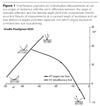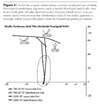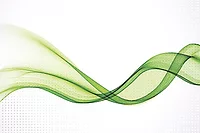Man versus Machine

Regardless of whether one works in the pigment, paint or automotive industry, those who deal with interference pigments cannot avoid contending with their physical and optical properties. Unfortunately, that is frequently forgotten and ignored due to a lack of knowledge of, and experience with, that particular type of pigment. Visual and instrumental characterization of a pigment's optical properties are equally important, since the color that results will vary with the angle at which light is incident on it. Together with the viewing angle, that angle yields a precise representation of the interferences involved.


Geometries other than that mentioned above, including those where the angle of illumination is held constant and the difference between the angle of specular reflection and the viewing angle is varied, are employed in arriving at complete characterizations of the optical properties of interference pigments. The results of such measurements yield aspecular lines that are largely attributable to scattered light and characteristic of the particular angle of illumination employed. Illumination is usually at 45°, and measurements are taken while the difference between the angle of specular reflection and the viewing angle is varied from 15° to 25°, 45°, 75° and 110° (aspecular angle).
Such geometries are currently employed in industry, although interferences cannot be acquired for the reasons stated above, where various interference pigments or admixtures of them with other pigments may well yield nearly identical aspecular lines (Figure 3). Delivery conditions thus cannot be formulated based on such measurements in the case of interference pigments and paints pigmented with them.

Visual Characterizations
In the case of visual inspections, inspectors normally stand opposite a laboratory window and point a test panel at the window. They initiate their inspections by holding a test panel flat against their stomach or chest such that they see light from the window reflected in the panel. Without shifting their location, they then tilt the panel upward or downward. If we examine the metrological geometries for those motions, we arrive at the following procedure for checking test samples.At its initial orientation, the test panel will be illuminated at an angle of incidence of 75° and viewed at an angle of 105°, the angle at which light coming from outdoors will be specularly reflected by the test panel. If the panel is then tilted downward 5°, the angle of illumination will change from 75° to 80°, the angle of specular reflection will change from 105° to 100°, and the viewing angle will change from 105° to 110°. The angular relationships between the illumination (light coming from outdoors), the observer (the inspector's eyes) and the plane of the sample undergoing testing will then have changed. For the case in question, the difference angle will become -10°, i.e., viewing will be from a trans-location. Viewing will then take place from the far side of the specularly reflected beam, referred to the incident (trans-side) illumination.
Continuing to tilt the test panel downward in 5° increments will increase the angle of incidence from 80° to 85° and 90°. The angle of specular reflection will then change from 100° to 95° and 90°, respectively; the viewing angle will change from 110° to 115° and 120°, respectively, and their difference will change from -10° to -20° and -30°, respectively (Figure 4).

Similar relationships occur when the test panel is tilted upward, i.e., in this case, the angles of illumination, viewing and the difference between the angle of specular reflection and the viewing angle will simultaneously vary (Figure 5). These geometries, which occur when visually characterizing samples while standing opposite a laboratory window, never occur in the case of commercially available photometric instrumentation, which is why agreement between visual and instrumental characterizations of interference pigments will never occur.

Light Booth
There are two methods for characterizing test panels in a light booth. Either the test panel involved is tilted in one direction or the other, without establishing the angular relationships to be involved, as in the case of visual characterizations, or the test panel is placed on a mechanism situated in the illumination chamber that predetermines certain angular relationships. Illumination is vertically from above in either case. Such mechanisms usually presume an angular relationship for which the viewer will see the light source reflected in the test panel, but take no account of the viewer's height and distance from the test panel, i.e., take no account of the viewing location.Assuming that the test panel is inclined at an angle of 20° with respect to the laboratory table, we arrive at the following angular relationships, referred to the plane of the test panel. The angle of illumination will be 70°, and the viewer will see the light source reflected in the panel when viewing it at an angle of 110°. The test panel is then tilted upward and downward through 10°, yielding the following angular relationships. The angle of illumination will change from 70° to 80°, and the angle of specular reflection will become 100°. Viewing will then be at a trans difference between the angle of specular reflection and the viewing angle of -20°. Similarly, tilting the test panel in the other direction through 10° will yield a cis difference angle of +20°. The viewing angle will change from 70° to 60°, the angle of specular reflection will become 120° and the viewing angle will become 100°. No such angular relationships are implemented in any items of photometric instrumentation.
In the case of "uncontrolled" motions of a test panel, it is presumed that the incident light beam is perpendicular to the plane of the panel. Viewing will then be at an angle of, for example, 135°, depending upon the viewer's height, their distance from the test panel, and the location of their eyes. If the test panel is then tilted through 5° toward the viewer, the angle of illumination will change from 90° to 85°, the angle of specular reflection will change from 90° to 95° and the viewing angle will change from 135° to 140°, yielding a cis aspecular angle of 40°. Continuing to tilt the test panel toward the viewer will increase all of the angles involved (Figure 6).

However, there is a method for visually characterizing interference pigments and admixtures pigmented with interference pigments that overlaps instrumental characterizations. The optical properties of interference pigments may be acquired if the angle of illumination is varied while the aspecular angle, i.e., the difference between the angle of specular reflection and the viewing angle, is held constant. When illumination and reflection are at steep angles, measurements are made at angles close to the angle of specular reflection.

Interference pigments, such as Iriodin Pearl Gold and the similarly formulated Xirallic Sunbeam Gold, may also be distinguished using this visual method. However, conventional visual and instrumental methods yield hardly any differences between those pigments.

The Effects of Solar Altitude
When assessing interference colors in vivo on a vehicle, some of the factors that must be taken into account are the current solar altitude, the viewer's height and the viewer's distance from the vehicle. In conjunction with the solar altitude, yet another factor that plays a role is the geographic latitude of the viewing site involved. If we ignore spectral and intensity shifts due to the Rayleigh and Tyndall effects and assume uniformly white sunlight, we arrive at two types of examples having differing sets of parameters.Münster, Germany, which is situated at 52° north latitude, has a lot of rain and few sunny days. Fort Lauderdale, Florida is situated at 26° north latitude, has little rain and many sunny days. It is assumed that the viewer is situated at the same location opposite the vehicle's left-front wheel and looking at its hood. The sun is shining on the opposite side of the vehicle such that sunlight is reflected off its hood, toward the viewer. At noon in Münster in mid June, the solar altitude (90°, minus Münster's latitude, plus the solar declination) will be its annual maximum of 61°. The viewer will perceive the resultant interference color occurring close to the specular reflection (Figure 9). Although a viewer situated at the same location with respect to the same vehicle in Fort Lauderdale, where it will be earlier in the morning, will perceive the same color as the viewer in Münster, it will have changed when noon rolls around, since the solar altitude will have increased to 81°. The interference colors occurring between those two solar altitudes cannot be observed in Münster, since the solar altitude there never exceeds 61° (Figure 10).

Interference pigments have optical properties that may be acquired using new visual and instrumental methods. Conventional methods provide little information that will allow formulating descriptions of value for incoming-goods inspections and quality control. Conventional methods are also hardly suitable for identification and characterization purposes, which means that expending more time and effort on their identification and characterization and obtaining incorrect results are inevitable. Further work on the optical properties of interference pigments will only benefit all involved.
Notes
The various conventions for designating angles in the case of reflectance measurements were discussed by ASTM Working Group E 12.06. In contrast to the standard practice, which associates the normals to surfaces with 0°, the convention employed here superimposes a graduated, semicircular arc covering the angular range 0° - 180° whose plane is normal to the surface whose reflectance is to be measured on that surface, which means that the normal to the surface will be at 90°, rather than 0°. Although that approach yields clearer descriptions of the angular relationships involved in reflectance measurements, it causes purists' hair to stand on end. For more information, e-mail wcramer@muenster.de.
Looking for a reprint of this article?
From high-res PDFs to custom plaques, order your copy today!






